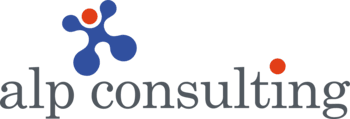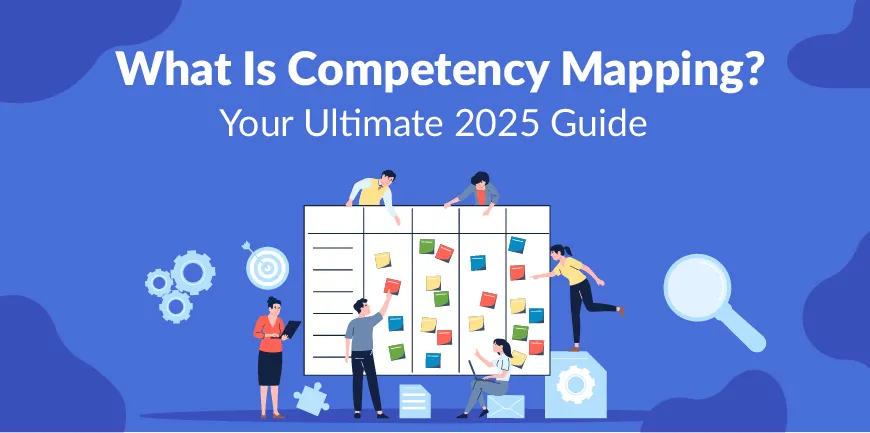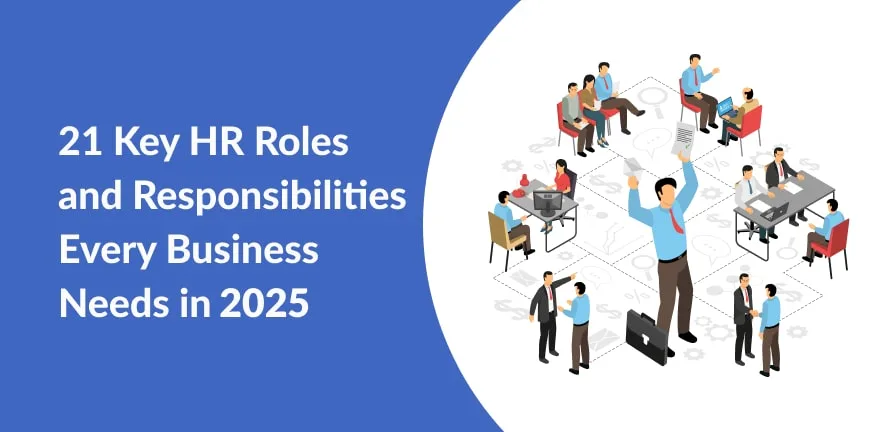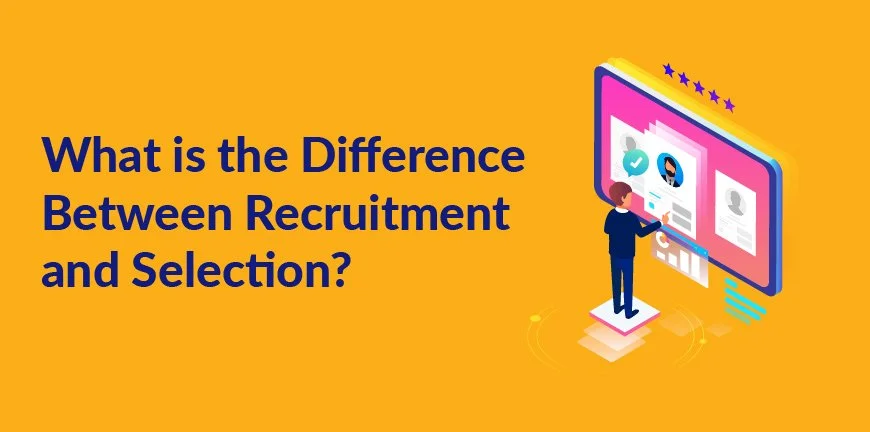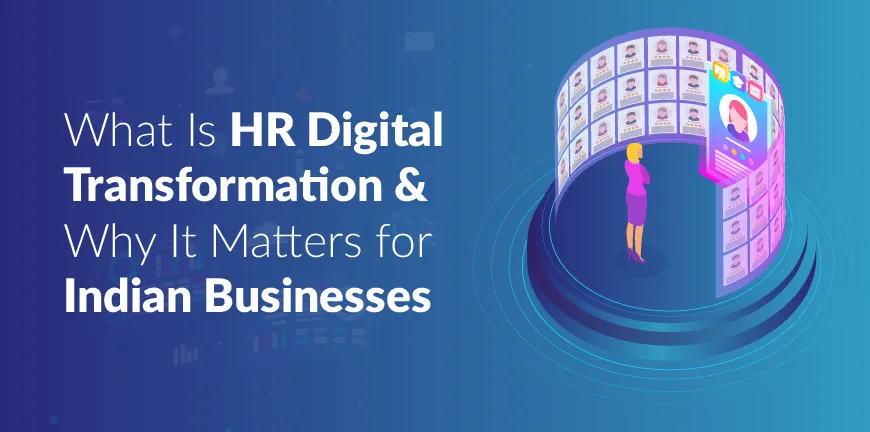
Nearshore vs. Offshore IT Staff Augmentation
25/10/2025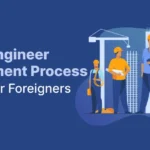
Engineer Recruitment Process in Japan: A Guide for Foreigners
27/10/2025- What Is Competency Mapping? Definition and Meaning in HRM
- What are the Objectives of Competency Mapping in Modern Organizations?
- What are the Key Steps in the Competency Mapping Process
- Types of Competency Mapping You Should Know
- What are the Key Methods and Tools of Competency Mapping?
- Popular Competency Mapping Models Used in HR
- What are the Benefits and Advantages of Competency Mapping for Businesses
- Common Challenges in Implementing Competency Mapping
- Future of Competency Mapping in HR: 2025 and Beyond
- Conclusion
- Key Takeaways
- FAQs
Competency mapping has evolved from a basic 1970s HR tool into a strategic foundation for workforce development by 2025. It provides a structured method for defining the essential skills, knowledge, and behaviors required for role success.
Despite 69% of companies prioritizing succession planning, only 35% have formal plans: a gap competency mapping is perfectly suited to bridge. Modern mapping is an intelligent system that aligns workforce capability with business agility, making it a vital solution for reducing turnover and enhancing overall performance.
This comprehensive guide covers what competency mapping entails, why it matters for today’s business environment, and the practical methods organizations can implement effectively.
What Is Competency Mapping? Definition and Meaning in HRM
Competency mapping is a systematic process of identifying and assessing the skills, knowledge, and abilities required for employees to perform their roles effectively within an organization. This strategic HR practice creates a detailed inventory of competencies essential for success in specific job roles or across the entire organization.
The concept gained momentum in the 1970s when Harvard psychologist David McClelland suggested that intelligence and traditional achievement scores might not predict job success effectively. Organizations have since recognized that academic qualifications and experience alone fail to predict performance accurately.
Competency mapping in HRM serves as a strategic tool for enhancing organizational performance by aligning individual capabilities with business goals. HR professionals can evaluate candidates and employees through this structured, methodical approach that remains consistent across the organization.
The fundamental purpose of competency mapping centers on understanding each individual’s and department’s:
- Knowledge and technical skills.
- Motives and traits.
- Social roles and behaviors.
- Strengths and development areas.
Competency mapping in HR helps identify skills gaps in people and departments. This enables HR leaders to make informed hiring decisions and invest in learning initiatives that bridge these gaps, improving overall workforce capability.
Traditional job descriptions focus primarily on qualifications, while competency mapping provides a complete view of performance requirements. When implemented properly, it creates a framework where employees understand expectations clearly, recognize their current position, and identify specific improvement areas.
The competency mapping process evaluates role competencies against the competencies possessed by the employee in that role. This comparative analysis helps organizations determine employee fit and identify training needs for performance improvement.
Certain competencies prove more difficult to measure and cannot be improved through standard learning approaches. Organizations that provide growth opportunities significantly increase the chances of employees reaching their potential.
Creating a detailed competency map ensures your workforce possesses the necessary attributes to meet current and future business needs. Moreover, this strategic alignment optimizes talent management processes, enhances employee performance, and builds a culture of continuous improvement.
Properly implemented competency mapping becomes a cornerstone of effective workforce management, helping organizations build teams capable of delivering on strategic objectives.
What are the Objectives of Competency Mapping in Modern Organizations?
Organizations implement competency mapping to address specific business challenges while building stronger, more capable teams. This systematic approach serves multiple strategic objectives of competency mapping that directly impact organizational success and employee development.
1. Primary Business Objectives
Competency mapping addresses critical workforce challenges through focused objectives:
- Recruitment optimization: Creating precise job descriptions based on required competencies attracts suitable candidates while reducing time spent reviewing irrelevant applications. This systematic approach helps organizations avoid the costly mistakes that contribute to high turnover rates.
- Performance enhancement: Companies can assign tasks that utilize employee strengths while identifying areas requiring development. When employees understand performance expectations clearly, productivity improves as teams work more efficiently together.
- Training and development focus: Organizations identify specific gaps between current and desired competencies, enabling targeted learning interventions. Resources get invested in areas that yield maximum impact rather than generic training programs.
- Strategic alignment: Individual capabilities connect directly with organizational goals. A company expanding its market share might prioritize competencies like customer relationship management and market analysis to support this objective.
2. Operational Benefits
Competency mapping in HRM creates practical advantages for daily operations. Performance appraisal systems become more objective and transparent when assessments align with identified competencies. These steps in the competency mapping process establish clear criteria for decisions, reducing bias and improving fairness.
Succession planning benefits significantly from competency frameworks, particularly for leadership positions. Organizations identify employees with the necessary leadership competencies and prepare them for future roles before workforce shortages occur. Teams with engaged employees demonstrate 21% higher productivity than disengaged teams, according to Gallup’s research.
3. Employee Engagement and Retention
When employees see their skills and competencies recognized and valued, workplace morale increases substantially. LinkedIn’s Global Talent Trend 2024 reports a 7% higher retention rate at the three-year mark for employees who develop competencies and skills on the job.
Resource allocation becomes more strategic through competency mapping. Project planning improves when companies assign the right people to appropriate tasks, substantially increasing project success rates.
4. Strategic Foundation
Competency mapping establishes standards for employee training and development tailored specifically to organizational needs. This creates a solid foundation for identifying, acquiring, developing, deploying, and managing critical competencies effectively.
The priority organizations place on competency development reflects its importance: 60% of HR professionals surveyed by Gartner in 2021 reported that building critical skills and competencies was their number one priority. Organizations using systematic competency mapping create workforces skilled for current challenges while remaining adaptable for future opportunities.
What are the Key Steps in the Competency Mapping Process
Successful competency mapping requires a structured approach that creates lasting value for talent management across your organization. We provide a systematic methodology that helps companies build effective competency frameworks in an orderly and efficient manner.
The steps in the competency mapping process start with establishing clear objectives and scope. HR teams need to define the purpose behind their mapping initiative, whether improving performance management, supporting career development, enhancing training programs, or strengthening recruitment processes. This foundation determines which departments or roles to prioritize and identifies key stakeholders who will contribute their expertise throughout the project.
Organizations then conduct detailed job analysis using position information questionnaires (PIQs) or structured employee interviews. This analysis reveals existing skills and how employees connect with their roles. Supervisor evaluations and work history reviews provide additional insights for an unbiased perspective of current performance levels.
The next step involves identifying core competencies required for each role. These encompass knowledge, skills, behaviors, motives, and ambitions that align with daily responsibilities. Most frameworks categorize competencies into core (organization-wide), functional (department-specific), technical (role-specific), and leadership competencies.
Companies must then define proficiency levels for each competency. Effective frameworks typically use three to five levels, such as basic, intermediate, advanced, and expert. Each level should clearly outline the knowledge, skills, behaviors, and experience required to achieve that proficiency standard.
Validation through feedback represents a critical checkpoint. Subject matter experts, managers, and employees in respective roles must confirm that competencies accurately reflect job requirements and organizational needs. This validation ensures the framework connects with real-world performance expectations.
HR teams then organize the competency framework by bringing together role-specific competencies into a coherent model. This creates a practical structure for performance management, skill gap analysis, and development planning across different functions.
Documentation of competency descriptions follows, including behavioral indicators that illustrate expected performance at different proficiency levels. These descriptions help employees understand what each competency entails and how to demonstrate it effectively in their work.
Finally, organizations integrate the competency map into HR processes by incorporating it into job descriptions, performance evaluations, recruitment practices, and learning initiatives. This integration transforms the framework from a theoretical exercise into a practical management tool.
Companies should avoid common implementation mistakes. Many organizations identify too many competencies, creating confusion rather than clarity. As one expert notes, “Simple is better. Too many competencies and multiple methods of rating and measuring can create confusion when the primary objective is to bring clarity.”
Once complete, the competency mapping process provides a powerful foundation for talent management. The resulting framework enables objective hiring decisions, targeted development initiatives, and strategic workforce planning that creates a more capable and aligned workforce.
Types of Competency Mapping You Should Know
Organizations need practical frameworks that match their specific business requirements and workforce challenges. Competency mapping approaches vary significantly, from comprehensive organizational models to targeted assessment methods designed for particular roles or industries.
The foundation of effective competency mapping starts with three core categories. Technical competency mapping evaluates the specialized skills employees need to complete their daily tasks successfully. Software developers require proficiency in specific programming languages, while mechanics need expertise in engine diagnostics and repair.
Behavioral competency mapping focuses on the attitudes and soft skills that drive performance, including communication abilities, problem-solving approaches, and creative thinking. Leadership competency mapping identifies the qualities needed to guide teams and drive organizational success, such as strategic thinking, team inspiration, and change management.
Organizations can also structure their approach around four human capability areas. Intellectual competency mapping examines analytical thinking, communication skills, creative problem-solving, and planning capabilities. Motivational competency mapping assesses drive for learning, achievement orientation, time management, and persistence through challenges.
Emotional competency mapping evaluates stress management, positivity, initiative-taking, and interpersonal effectiveness. Social competency mapping covers teamwork, accountability, customer service orientation, and relationship-building skills.
Several established frameworks provide structured approaches for implementation:
The Lominger Competency Model evaluates 67 leadership and management competencies, including approachability, business acumen, and career ambition. What makes this framework unique is its open-ended assessment approach—questions have no predetermined correct answers, helping companies identify candidates who align with their specific culture.
Clifton Strengths measures individual talents through 177 competency areas, asking participants to select between descriptive statements that reveal natural thinking patterns. The assessment categorizes results into 34 distinct strength themes. The SHL Universal Competency Framework provides detailed performance specifications through 8 competency factors, 20 dimensions, and 96 specific components.
Industry-focused frameworks address sector-specific needs. The European e-Competence Framework covers 41 IT-related competencies, creating a shared language between HR teams and technology departments. The ASTD Competency Model structures HR professional assessment across three levels: foundation skills, specialized expertise areas, and executive capabilities.
Assessment methods offer different approaches to competency evaluation:
Structured questionnaires evaluate capabilities through formats like metric questionnaires (background and decision-making analysis) and functional job analysis (reasoning and environmental adaptability assessment). Critical incident analysis documents specific workplace situations where employees demonstrate positive or negative competency examples.
Structured interviews reveal individual potential and career inclinations when conducted systematically. Psychometric testing measures abilities through standardized achievement and aptitude assessments. Assessment centers create realistic work scenarios to observe actual behaviors and decision-making processes.
The key to successful implementation lies in selecting frameworks that address your organization’s specific challenges while remaining practical for your HR team to manage and employees to understand.
What are the Key Methods and Tools of Competency Mapping?
Successful competency mapping depends on choosing the right combination of methods of competency mapping and tools that match your organizational context. Each approach brings specific strengths depending on your objectives and available resources.
1. Data Collection Methods for Competency Mapping
Robust data collection forms the foundation of effective competency mapping. Interviews provide deep qualitative insights into the competencies different roles actually require. This method reveals the context behind each competency, offering understanding that goes beyond simple skill inventories.
Observation techniques involve monitoring employees in their natural work environment to identify the behaviors and skills that contribute to successful performance. This approach proves especially valuable for roles that involve hands-on work or direct customer interaction.
Document analysis reviews existing materials like job descriptions, performance appraisals, and training records to identify required competencies. This historical perspective helps organizations understand how competency requirements have changed over time.
2. Assessment Tools and Techniques
Organizations can choose from several specialized competency mapping tools to measure competencies effectively. Questionnaires evaluate personality and skills through structured approaches like metric questionnaires that examine background and decision-making patterns, or functional job analysis that assesses reasoning abilities and work environment interactions.
The critical incidents technique analyzes real workplace situations where supervisors document both positive and negative employee behaviors. This systematic approach identifies specific behaviors that contribute to success or failure in particular competencies.
Assessment centers simulate real work activities designed to bring out natural behaviors, helping organizations observe how people actually respond to job scenarios. These centers typically use group activities and discussions that mirror authentic workplace challenges.
Psychometric tests provide systematic analysis based on established standards, primarily through achievement and aptitude assessments. The aptitude component reveals natural inclinations, while achievement tests measure current proficiency levels.
3. Modern Technology Solutions
Competency mapping in 2025 increasingly relies on advanced technology platforms. AI-powered competency systems can infer skills from performance data, identify gaps automatically, and recommend personalized development pathways. These intelligent systems continuously adapt based on real performance outcomes.
Competency Management Systems centralize and update competency frameworks, map roles effectively, and integrate with other HR and talent systems. This centralization creates a reliable source for all competency-related activities across the organization.
Learning Management Systems align training content with specific competencies, track individual progress, and deliver structured learning pathways across various models. Feedback and assessment tools provide 360-degree evaluations and self-assessments to validate skills and generate real-time performance insights.
Companies that adopt a skills-based approach through these modern tools see measurable results – they’re 107% more likely to place talent effectively and 49% more likely to improve internal processes. These platforms improve recruitment accuracy by matching candidate skills with actual role requirements and support strategic talent decisions through skills gap analysis and personalized learning recommendations.
The right combination of methods and tools requires careful consideration of your organizational context, available resources, and specific objectives. When selected thoughtfully, these approaches create competency mapping frameworks that accurately reflect your unique requirements and strategic goals.
Popular Competency Mapping Models Used in HR
HR professionals choose from several proven competency mapping models to address their specific talent management needs. These frameworks provide structured approaches for identifying, assessing, and developing workforce capabilities across different organizational contexts.
The Iceberg Model, developed by David McClelland, remains the most practical competency mapping model for understanding employee performance. This model separates competencies into visible aspects (knowledge and skills) that appear above the waterline, while hidden attributes below (motives, traits, and self-concept) drive sustained performance. Organizations benefit from this dual perspective:
- Visible Competencies: Measurable skills and knowledge that form the technical foundation for job performance.
- Hidden Competencies: Intrinsic qualities, including self-concept, traits, and motives that influence how individuals apply their technical capabilities.
The Nine-Box Grid provides HR teams with a powerful tool for assessing employee performance and potential simultaneously. This matrix categorizes employees based on current performance and future potential, helping organizations make informed decisions about talent development and resource allocation across nine distinct categories.
Technology-focused organizations often implement the European e-Competence Framework (e-CF), which contains 41 competencies specifically designed for IT work contexts. This framework facilitates better communication between HR and IT departments, ensuring technical roles are properly understood and filled.
The AIHR HR Competency Model offers a T-shaped approach that differentiates between core competencies (the horizontal bar) and functional/leadership competencies (the vertical stem). The five core competencies—Business Acumen, Data Literacy, Digital Agility, People Advocacy, and Execution Excellence—represent essential skills all HR professionals need regardless of their specific role or organization size.
Organizations focused on leadership development frequently use The Lominger Competency Model, which assesses 67 competencies, including approachability, business acumen, compassion, and creativity. This model’s unique feature lies in assessment questions with no predetermined correct answers, helping organizations identify candidates who align with their specific culture.
Clifton Strengths appeals to organizations seeking strength-based talent management. This assessment measures 177 competencies through participant choices between self-descriptors, categorizing natural talents into 34 themes while emphasizing individual strengths rather than weaknesses.
The SHL Universal Competency Framework provides comprehensive workplace competency coverage through its 3-tier structure encompassing 8 general competency factors, 20 dimensions, and 96 components. This statistically-informed model specifies requirements for optimal performance across various industries.
Many organizations develop custom competency models tailored to their unique requirements. These typically include organizational core competency models (company-wide skills), functional competency models (department-specific technical skills), job competency models (role-specific skills), and leadership competency models (management position skills).
The most effective competency mapping approach involves adapting established frameworks to address specific organizational needs rather than implementing generic models without customization. Success depends on aligning the chosen model with organizational objectives, industry context, and company culture.
What are the Benefits and Advantages of Competency Mapping for Businesses
Competency mapping delivers measurable business results that directly strengthen organizational performance and workforce capabilities. The strategic advantages of competency mapping extend across all HR functions, creating a foundation for sustainable growth and competitive advantage. Here are the 7 key benefits of competency mapping:
1. Improved Recruitment and Talent Acquisition
Companies gain precision in hiring through competency-based job descriptions that attract candidates with the right skills and cultural fit. This targeted approach saves HR departments valuable time while reducing the financial impact of poor hiring decisions. Organizations implementing competency mapping report higher quality hires who demonstrate better long-term performance and engagement.
2. Enhanced Performance and Productivity
Clear competency frameworks enable employees to understand exactly what success looks like in their roles. This clarity allows individuals to focus their talents on relevant tasks while collaborating effectively with colleagues who possess complementary skills. The result is measurably improved productivity and increased profits across the organization.
3. Strategic Workforce Development
Competency mapping identifies specific gaps between current capabilities and desired performance levels. This insight enables businesses to design cost-effective training programs that deliver maximum impact. Rather than generic development approaches, organizations can address shortcomings systematically while building on existing employee strengths.
4. Strengthened Succession Planning
Effective competency mapping reveals employees with leadership potential who can be prepared for future roles. This proactive approach creates a robust internal talent pipeline, reducing dependency on external hiring for critical positions. With 69% of organizations considering succession planning a high priority, but only 35% maintaining formal plans, competency mapping provides a significant competitive advantage.
5. Streamlined Resource Allocation
Project success rates increase substantially when companies assign the right people to appropriate tasks based on competency assessments. This precision in resource allocation leads to better project outcomes and more efficient use of human capital. Organizations can make informed decisions about work scope and employee assignments that align with strategic objectives.
6. Employee Engagement and Satisfaction
Structured career paths and targeted skill development opportunities emerge naturally from competency mapping initiatives. When employees clearly understand performance expectations and receive appropriate support, workplace morale increases significantly. This transparency fosters innovation as employees develop industry-relevant capabilities that advance their careers.
7. Organizational Standards and Consistency
Competency mapping establishes uniform standards for training and development that reflect specific organizational needs. These benchmarks ensure consistency across all HR activities, from hiring and performance evaluation to career development and succession planning.
Organizations implementing competency mapping create a strategic framework that aligns individual capabilities with business goals while providing objective criteria for all personnel decisions. This systematic approach builds high-performing teams capable of delivering sustainable competitive advantage in complex business environments.
Common Challenges in Implementing Competency Mapping
Despite its proven benefits, competency mapping implementation faces significant obstacles across organizations. Studies reveal that 69% of organizations rate their competency management as only somewhat effective or not effective at all.
1. Poor Design and Definition of Competencies
Poorly articulated competency frameworks create the foundation for most implementation failures. When competencies lack specific behavioral indicators, they provide insufficient guidance about expected performance. Organizations often create unwieldy frameworks with too many competencies—exceeding the recommended 10-12 per role—which dilutes focus on critical success factors. Many frameworks exclude technical competencies entirely, despite their importance for engineers and IT specialists.
2. Stakeholder Buy-In and Resistance Issues
Getting organizational support remains one of the biggest hurdles for competency initiatives. As Lalit Chaturvedi, Vice President of HR at ELGI, observes, “a lack of understanding of the science of competency mapping” prevents organizations from aligning all stakeholders. Employees often show apprehension about evaluations, fearing negative consequences or unclear expectations. The assessment process creates anxiety and psychological pressure for those being evaluated.
3. Technology and Tool Limitations
Many organizations lack appropriate software to streamline competency management processes, making implementation difficult. Companies still rely on inefficient Excel sheets for rating and assigning competencies, creating tedious and error-prone workflows. The 2015 State of Performance Management Study found that 30% of organizations used paper-based spreadsheets as their primary performance management tool.
4. Resource and Time Constraints
Competency mapping requires substantial time investment, particularly for organizations with large workforces or diverse roles. Limited assessment time, combined with lengthy implementation processes, creates bottlenecks from introduction to results announcement. These constraints lead organizations to prioritize other HR processes—in 2014, only 9% of talent management budgets went to competency management, dropping five points by 2016.
5. Organizational and External Barriers
Structural challenges complicate implementation, especially in distributed, matrix-based, and global operations where functions operate autonomously. Organizations cite a lack of organizational charts and permanent Assessment Center positions as major external obstacles. Cultural factors represent significant barriers, mentioned 28 times more frequently than other factors in research studies.
6. Framework Maintenance and Updates
Competency frameworks become outdated quickly due to technological advances and changing organizational strategies. Without regular reviews, frameworks fail to reflect current business needs. Unstable situations and frequent management changes further complicate the maintenance process.
Solutions for Implementation Success
Organizations can address these challenges through systematic approaches:
- Create clear, measurable competency definitions with behavioral indicators.
- Involve stakeholders from all levels in development processes.
- Utilize technology for automation and standardization.
- Start implementation with high-impact roles before expanding.
- Schedule regular framework reviews to maintain relevance.
- Form diverse focus groups to minimize bias in competency definitions.
Organizations that anticipate these obstacles can develop strategic approaches that enhance their competency mapping effectiveness and create sustainable workforce development frameworks.
Future of Competency Mapping in HR: 2025 and Beyond
Technology advances are reshaping competency mapping from basic frameworks into intelligent, predictive systems. By 2025, this HR function will have moved from a support tool into the strategic backbone of workforce transformation.
1. AI-Powered Skill Intelligence
Advanced analytics are creating living, data-driven systems instead of static frameworks. These intelligent platforms infer competencies from performance data, learning histories, and dynamic skill ontologies. Organizations now can:
- Surface skill gaps automatically.
- Personalize development pathways.
- Align talent with changing business priorities.
- Predict future competency needs.
IBM research indicates that by 2025, 80% of workforce management processes will be automated, allowing HR teams to focus on strategic initiatives rather than administrative tasks. Competency mapping in 2025 is increasingly embedded into career journeys, helping employees visualize clear growth pathways.
2. Remote Work and Digital Collaboration
Remote and hybrid work models have shifted focus toward competencies like digital collaboration, self-management, and virtual communication. Competency mapping must now assess these capabilities to ensure effectiveness in virtual teams. This requires redefining role-based competencies to match distributed workforce needs.
3. Predictive Workforce Planning
Competency mapping will anticipate future skill shortages through advanced analytics, enabling proactive workforce planning. Research shows that 70% of skills used in most jobs will need updating due to AI by 2030, with 80% of engineering staff requiring upskilling for AI-driven roles through 2027. Organizations that adopt adaptive competency frameworks can increase workforce productivity by up to 35%, according to McKinsey research.
4. Integrated Talent Ecosystems
Competency mapping is becoming more integrated with overall talent management systems. Leading organizations implement cloud-based platforms like SAP SuccessFactors, Workday, and Oracle HR Cloud for real-time competency tracking. These integrated ecosystems create seamless talent development pipelines that automatically identify needs, recommend interventions, and track progress across the employee lifecycle.
The future of competency mapping focuses on creating clear career pathways that motivate employees and future-proof organizations. As Josh Bersin emphasizes, 2025 will focus on “drive change-agility through career pathways, development, and internal mobility,” reflecting both urgency and business impact for competency mapping in addressing labor shortages and productivity challenges.
Conclusion
Competency mapping has evolved into a strategic necessity, aligning workforce capabilities with core business objectives to achieve sustained competitive advantage. Forward-thinking organizations leverage structured frameworks, often customized with methodologies like the Iceberg Model or AI-powered platforms, to achieve measurable improvements in talent placement, reduced hiring costs, & robust succession planning.
While implementation requires overcoming challenges such as stakeholder alignment, the investment yields significant returns through improved hiring accuracy and targeted employee development. Technology continues to reshape this field, creating intelligent, adaptive talent management systems. Systematic competency mapping is now crucial for positioning a business for both current and future success.
Partner with Alp Consulting to design and implement a tailored competency mapping framework. We offer cutting-edge HR solutions that identify crucial skill gaps, streamline talent acquisition, and build future-proof leadership pipelines.
Key Takeaways
- Competency mapping reduces hiring mistakes by 80% and doubles the effectiveness of talent placement.
- Success requires defining competencies, framework validation, and HR process integration with stakeholder buy-in.
- By 2025, AI-powered systems will automatically identify skill gaps and personalize workforce development in real-time.
- Maximize accuracy using multiple assessment methods: interviews, psychometrics, observations, and assessment centers.
- Strategic alignment connects competencies to goals, boosting performance, succession planning, and engagement.
- Competency mapping is a strategic tool, transforming workforce potential into competitive advantage via data.
FAQs
1. What is competency mapping, and why is it crucial for organizations?
Competency mapping is a systematic process of identifying and assessing the skills, knowledge, and abilities required for employees to perform effectively in their roles. It’s crucial because it helps organizations reduce hiring mistakes, improve performance, and align individual capabilities with business goals.
2. How does competency mapping benefit businesses?
Competency mapping offers numerous benefits, including improved recruitment, enhanced employee performance, strategic workforce development, strengthened succession planning, and increased employee engagement.
3. What are the key steps in implementing competency mapping?
The key steps include defining objectives, conducting job analysis, identifying core competencies, defining proficiency levels, validating the framework, organizing the competency model, documenting competency descriptions, and integrating the map into HR processes.
4. What challenges do organizations face when implementing competency mapping?
Common challenges include poorly defined competencies, lack of stakeholder support, technology limitations, resource constraints, and difficulties in maintaining and updating frameworks.
5. How is competency mapping expected to evolve by 2025?
By 2025, competency mapping is anticipated to become more AI-powered, with intelligent systems automatically identifying skill gaps and personalizing development pathways.

Rajkumar Shanmugam
Rajkumar Shanmugam is the Head of HR at ALP Consulting, bringing over 19 years of comprehensive HR leadership experience across India and international markets. His expertise spans talent acquisition, employee relations, performance management, compliance, and HR transformation. Rajkumar has a proven track record of driving people-centric initiatives, enhancing workplace culture, and aligning HR strategy with business goals. With extensive experience in US staffing operations and global mobility, he continues to lead organizational excellence through innovation and employee engagement.
